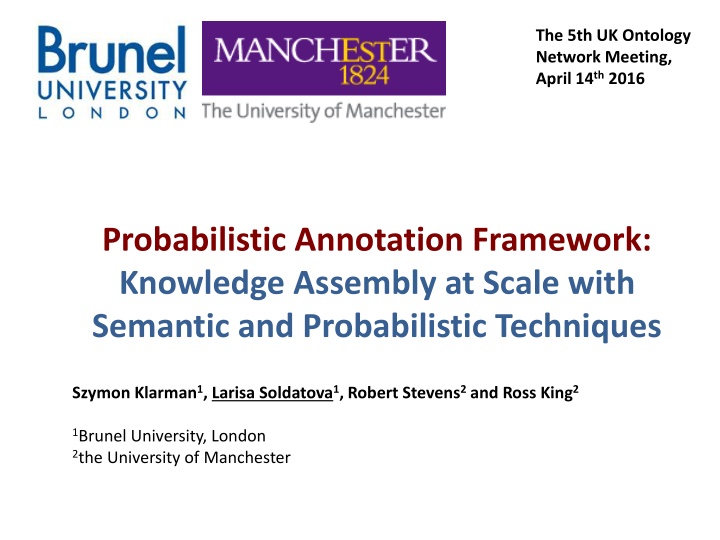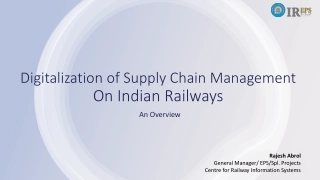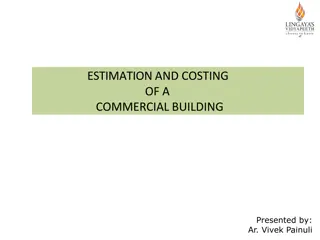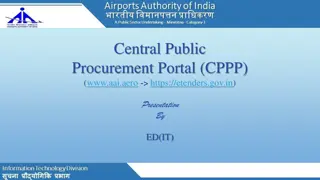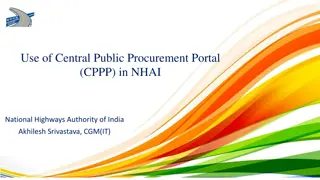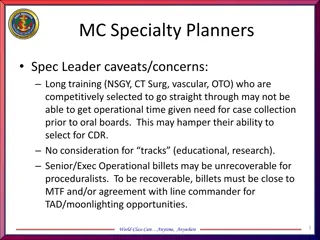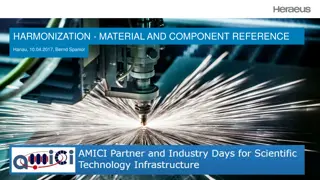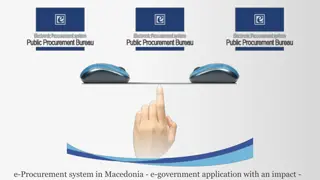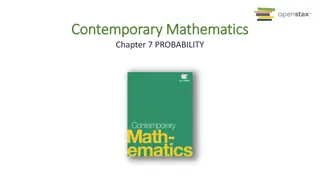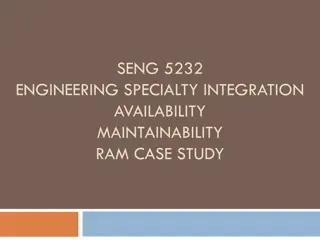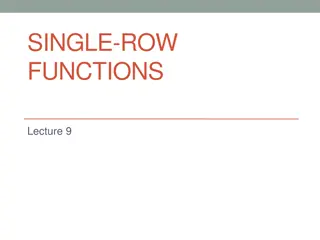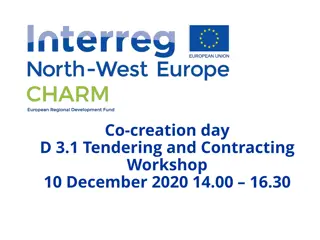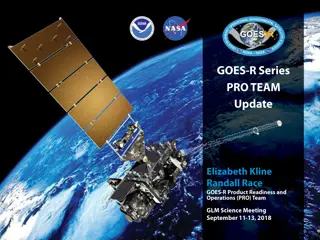Single vs Two-Stage Tendering: Operational Overview
Explore the differences between single and two-stage tendering methods within the YORhub frameworks. Learn how they function, their pros and cons, and recommended timescales for each stage. Discover the process of supplier submissions, evaluation criteria, and contract awarding to gain a comprehensive understanding of these procurement approaches.
Download Presentation

Please find below an Image/Link to download the presentation.
The content on the website is provided AS IS for your information and personal use only. It may not be sold, licensed, or shared on other websites without obtaining consent from the author.If you encounter any issues during the download, it is possible that the publisher has removed the file from their server.
You are allowed to download the files provided on this website for personal or commercial use, subject to the condition that they are used lawfully. All files are the property of their respective owners.
The content on the website is provided AS IS for your information and personal use only. It may not be sold, licensed, or shared on other websites without obtaining consent from the author.
E N D
Presentation Transcript
The 5th UK Ontology Network Meeting, April 14th 2016 Probabilistic Annotation Framework: Knowledge Assembly at Scale with Semantic and Probabilistic Techniques Szymon Klarman1, Larisa Soldatova1, Robert Stevens2 and Ross King2 1Brunel University, London 2the University of Manchester
The Big Mechanism www.darpa.mil/program/big-mechanism $45 million DARPA research program. 2014 -2017. Aims to develop software that will read cancer research papers, integrate them into a (big) cancer model, and frame new hypotheses. We are in the Chicago Consortium (the University of Chicago, ISI (Information Sciences Institute, CA), Microsoft, the University of Manchester, Brunel University, London)
Reading-Assembly-Explanation Reading Assembly Explanation MAP2 Cyclic AMP intracellular alpha-6/beta-4 integrin IRS-2 FRS2 Galectin-1 Lyn HGF receptor (Met) VEGFR-1 IRS-1 PDZ-GEF1 PI3K cat class IA PDGF receptor GAB1 C3G NO intracellular Neurofibromin GRB2 Shc ALK H-Ras R-Ras N-Ras SOS Cyclic GMP intracellular c-Kit K-RAS Protein kinase G1 Pyk2(FAK2) c-Raf-1 B-Raf Tiam1 RASGRF2 SHP-2 PIP5KI Ca('2+) cytosol PKC 1,2-Diacyglycerol intracellular MEK6(MAP2K6) Rac1 MEK1/2 PAK1 NCK2 (Grb4) MLK3(MAP3K11) CDC42 MEKK4(MAP3K4) MEKK1(MAP3K1) BETA-PIX cPLA2 Very large conflicting (probabilistic) network MEK4(MAP2K4) AKT(PKB) Computational hypotheses/ wet lab Experiments controlling states of the network JNK(MAPK8-10) ERK1/2 HSP27 c-Jun ESR1 (nuclear) SP1 c-Fos Elk-1 PR (nuclear) HIF1A RIPK4 EGR1 p90Rsk PDLIM3 CREB1 c-Myc Androgen receptor C/EBPbeta Slc39a14 (Zip14) HDBP1 CDK2 FMO3 SLC36A1 MAP2 Cyclic AMP intracellular alpha-6/beta-4 integrin IRS-2 FRS2 Galectin-1 Lyn HGF receptor (Met) VEGFR-1 IRS-1 PDZ-GEF1 PI3K cat class IA PDGF receptor GAB1 C3G NO intracellular Neurofibromin MAP2 GRB2 Cyclic AMP intracellular Shc alpha-6/beta-4 integrin ALK IRS-2 H-Ras FRS2 R-Ras Galectin-1 Lyn HGF receptor (Met) VEGFR-1 N-Ras SOS Cyclic GMP intracellular IRS-1 PDZ-GEF1 c-Kit K-RAS Protein kinase G1 PI3K cat class IA PDGF receptor Pyk2(FAK2) c-Raf-1 GAB1 B-Raf Tiam1 C3G NO intracellular Neurofibromin RASGRF2 SHP-2 GRB2 Shc ALK PIP5KI Ca('2+) cytosol H-Ras R-Ras PKC 1,2-Diacyglycerol intracellular N-Ras SOS MEK6(MAP2K6) Cyclic GMP intracellular Rac1 c-Kit MEK1/2 K-RAS PAK1 Protein kinase G1 NCK2 (Grb4) Pyk2(FAK2) MLK3(MAP3K11) CDC42 c-Raf-1 B-Raf Tiam1 MEKK4(MAP3K4) RASGRF2 SHP-2 MEKK1(MAP3K1) PIP5KI Ca('2+) cytosol BETA-PIX PKC cPLA2 1,2-Diacyglycerol intracellular Smaller (relevant) grounded model MEK4(MAP2K4) MEK6(MAP2K6) Rac1 MEK1/2 PAK1 AKT(PKB) JNK(MAPK8-10) NCK2 (Grb4) ERK1/2 MLK3(MAP3K11) CDC42 MEKK4(MAP3K4) HSP27 MEKK1(MAP3K1) c-Jun ESR1 (nuclear) BETA-PIX SP1 cPLA2 MEK4(MAP2K4) c-Fos Elk-1 PR (nuclear) HIF1A RIPK4 AKT(PKB) EGR1 JNK(MAPK8-10) p90Rsk PDLIM3 CREB1 ERK1/2 c-Myc HSP27 Androgen receptor C/EBPbeta Slc39a14 (Zip14) HDBP1 c-Jun ESR1 (nuclear) SP1 CDK2 c-Fos Elk-1 PR (nuclear) HIF1A RIPK4 FMO3 EGR1 p90Rsk SLC36A1 PDLIM3 CREB1 c-Myc Androgen receptor C/EBPbeta Slc39a14 (Zip14) HDBP1 CDK2 FMO3 SLC36A1
Knowledge assembly in Big Mechanism Evidence contradicts the model to degree 0.7 probabilistic inference model updates (probabilistic) event knowledge extraction evidence assembly experimental verification learning GRB2 binding GAB1 istruein PCM123456 GRB2 binding GAB1 is supported to degree 0.7 GRB2 binding GAB1 is experimentallyconfirmed
PAF: Probabilistic Annotation Framework OWL ontology covering: event-related concepts, metadata concepts and probability types.
rdf:type rdf:type GAB1_MOUSE GRB2_MOUSE Protein hasParticipantA hasParticipantB rdf:type rdf:type Binding Event GRB2 binding GAB1 represents represents 0.7 0.6 0.7 0.8 hasProvenanceProb hasProvenanceProb hasExtractionProb hasExtractionProb rdf:type rdf:type Statement statement_1 statement_..99 hasTruthValue hasTruthValue extractedFrom extractedFrom PMC123456 PMC654321 True hasEvidence hasEvidence False rdf:type rdf:type hasSubmitter hasSubmitter GRB2 does not interact directly with GAB1 In addition, GRB2 can associate with GAB1 Article rdf:type rdf:type Submitter NaCTeM FRIES
rdf:type rdf:type Protein GAB1_MOUSE GRB2_MOUSE hasParticipantA hasParticipantB rdf:type rdf:type Binding Event GRB2 binding GAB1 Existing BioPax model: What is the relation of the extracted infromation to the model: corroboration conflict specification
Probabilistic inference in model assembly https://dtai.cs.kuleuven.be/problog/editor.html#hash=d25614ef1b8f019b5834b0361ef07a4a event(ev). 0.7::supported(X) :- event(X), statement(Y), represents(Y, X), hasTruthValue(Y, true), combinedProb(Y). support for an event = disjoint sum of (combined) probabilities of different supporting statements, with each statement weighted by 0.7 combinedProb(Y) :- extractionProb(Y), provenanceProb(Y). combined probability = product of all probability scores statement(s1). represents(s1, ev). hasTruthValue(s1, true). 0.8::extractionProb(s1). 0.7::provenanceProb(s1). statement(s2). represents(s2, ev). hasTruthValue(s2, true). 0.7::extractionProb(s2). 0.6:: provenance Prob(s2). Note the increase in the probability of corroborated(ev) on adding the second supporting statement supported(ev) 0.392 supported(ev) 0.570752
Extracting events with uncertainty scores In vitro curcumin downregulated the expression of Bcl-2, and Bcl-XL and upregulated the expression of p53, Bax, Bak, PUMA, Noxa, and Bim at mRNA and protein levels in prostate cancer cells [14]. Treatment of mice with curcumin enhanced the expression of Bax, Bak, DR4 and DR5, and inhibited the expression of antiapoptotic Bcl-2 and Bcl-XL proteins. PMC2249593 Event Id Molecule Interaction Gene Extraction Accuracy Textual Uncertainty Provenance Uncertainty E32462 curcumin negative regulation BCL2_MOUSE 0.678 certain 0.475 E32744 curcumin positive regulation P53_HUMAN 0.658 certain 0.475 ... ... ... ... ... ... ...
Computing Total Uncertainty Experimental Confirmation Extraction Accuracy Textual Uncertainty Provenance Uncertainty T F - 0.9 0.1 0.5 Total Uncertainty Total Uncertainty Before Experiment Experimental Confirmation Total Uncertainty After Experiment Event Id Molecule Interaction Gene E32462 curcumin negative regulation BCL2_MOUSE 0.3941 TRUE 0.7489 E32744 curcumin positive regulation P53_HUMAN 0.3924 FALSE 0.1569 E32549 curcumin negative regulation Q9H014_HUMAN 0.3929 - 0.3929 ... ... ... ... ... ... ...
Updating the Model The current model is checked against the extracted events For example, it does not have a link curcumin negative regulation - protein Q9H014_HUMAN. Therefore the model can be extended by adding the link with a moderately high certainty
Thank you 12
